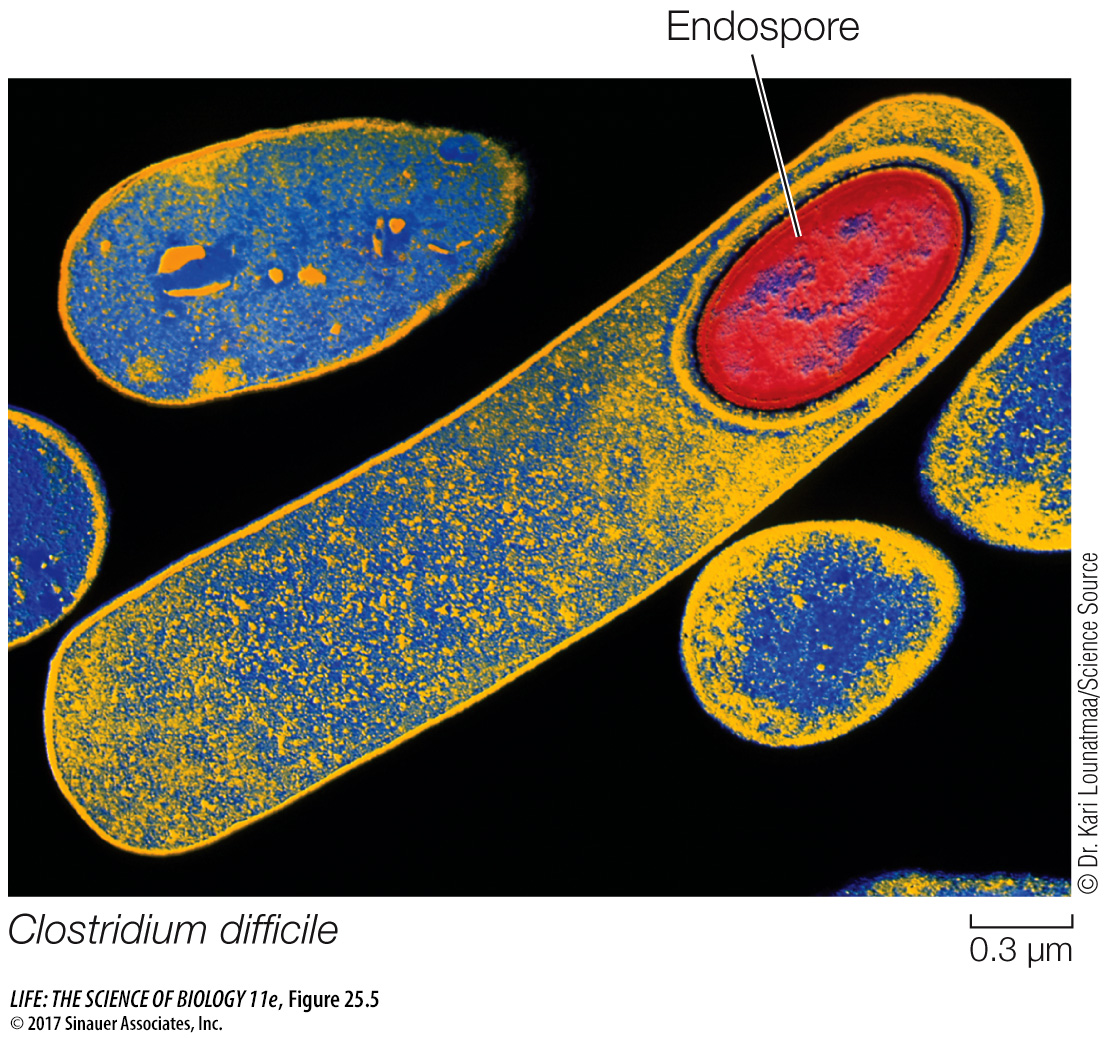Firmicutes include some of the smallest cellular organisms
The firmicutes are also known as low-
One group of firmicutes can produce resting structures called endospores (Figure 25.5). When a key nutrient such as nitrogen or carbon becomes scarce, the bacterium replicates its DNA and encapsulates one copy, along with some of its cytoplasm, in a tough endospore wall heavily thickened with peptidoglycan and surrounded by a spore coat. The parent cell then breaks down, releasing the endospore. Endospore production is not a reproductive process, as the endospore merely replaces the parent cell. The endospore, however, can survive harsh environmental conditions that would kill the parent cell, such as high or low temperatures or drought, because it is dormant—

Endospores of Bacillus anthracis are the cause of anthrax. Anthrax is primarily a disease of cattle and sheep, but it can be fatal in humans. When the endospores sense macrophages in mammalian blood, they reactivate and release toxins into the bloodstream. Bacillus anthracis has been used as a bioterrorism agent because it is relatively easy to transport large quantities of its endospores and release them among human populations, where they may be inhaled or ingested.
Members of the genus Staphylococcus—the staphylococci (Figure 25.6)—are abundant on the human body surface; they are responsible for boils and many other skin problems. Staphylococcus aureus is the best-

535
Another interesting group of firmicutes, the mycoplasmas, lack cell walls, although some have a stiffening material outside the cell membrane. The mycoplasmas are among the smallest cellular organisms known (Figure 25.7). The smallest mycoplasmas have a diameter of about 0.2 μm. They are small in another crucial sense as well: they have less than half as much DNA as most other prokaryotes. It has been speculated that the DNA in a mycoplasma, which codes for fewer than 500 proteins, may be close to the minimum amount required to encode the essential properties of a living cell.
